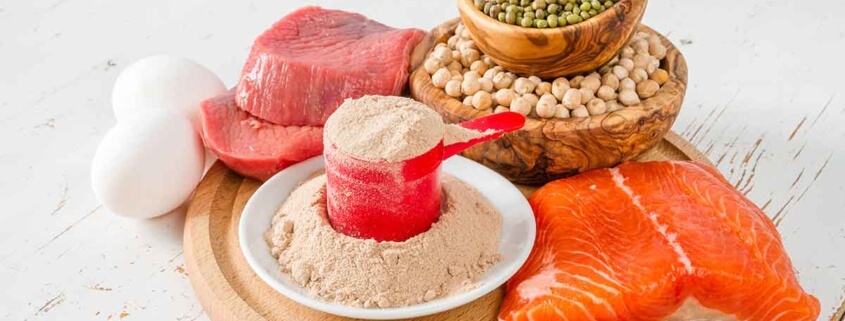Your Guide to Healthy Protein Intake
Protein is the building block of life. It’s a big part of what your muscles, organs, and other tissue are composed of. Almost every part of your body contains protein, and it’s one of the three basic nutrients (along with carbohydrates and fat) we use to sustain life, create energy, and maintain our basic biological processes.
Here’s a look at the basic things you need to know about protein intake to promote optimal health.
Complete and Incomplete Protein
There are more than 10,000 types of protein in your body. Protein itself is made up of 22 types of amino acids, all of which are important. However, nine of them are what are known as essential amino acids, meaning your body requires them, but it doesn’t manufacture them on its own, so you have to get them from food sources. The other 13 amino acids are produced by your body; since you don’t need to get them through your diet, they’re called nonessential.
Some foods—primarily animal products and soy—contain “complete protein,” which supplies all the essential amino acids in meaningful quantity. Most other plant-based food supplies “incomplete protein,” which contains significant quantities of some, but not all nine, essential amino acids.
This doesn’t mean you can’t get complete protein from a vegetarian or vegan diet; the right combination of plant-based foods can deliver all of the essential amino acids. This is one key reason that people who choose these diets and lifestyles need to learn how to do it properly.
Recommended Daily Protein Intake
How much protein you should consume each day depends on various factors, including your age, sex, general health, activity level, whether you strength train, and others. Generally speaking, healthy adults should get at least 8 grams of protein per 20 pounds of body weight daily (0.8 grams per kilogram). Another metric is to get between 10 and 35 percent of your daily calorie requirements from protein.
Kids don’t need quite as high a protein intake. Again, generally speaking, they need around 1 gram of protein per 2 pounds of body weight every day (0.5 grams per kilogram). As always though, kids and adults should get personalized advice from their pediatrician, GP, or qualified nutritionist.
Healthy Sources of Protein
Seafood, poultry, and meat all supply complete protein. Fish and shellfish are excellent sources because they’re also high in heart-healthy unsaturated fats and low in less-desirable saturated fat. They also supply a variety of other nutrients. Skinless poultry is another good option because it’s lean (the skin is where the significant load of saturated fat comes from).
Red meats like beef and pork are high in protein, but also high in saturated fat, so they should be eaten in moderation—or rarely, if at all. When you do indulge, opt for leaner cuts.
Eggs and dairy, also animal products obviously, also provide complete protein. Again, there are concerns about the saturated fat and cholesterol content, so choose reduced-fat or fat-free dairy items. Reduced-fat or fat-free yogurt is a healthy option from this category.
Legumes are one of the best sources of plant-based protein. This category includes soy, the main plant food for complete protein. Legumes also include the many types of beans, as well as peas and peanuts. These also offer healthful unsaturated fats and plenty of fiber, vitamins, minerals, and other nutrients.
Nuts and seeds also supply protein, unsaturated fats, fiber, and superior nutritional value. They’re higher in calories than most legumes, though, so stick to a handful or so. Fortunately, they’re satisfying because they’re so nutrient-dense, so a handful is really all you need for a healthy snack. To help limit your sodium intake, unsalted nuts and seeds are always a smarter choice.



